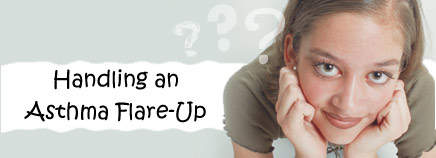
Asthma flare-ups (also called “asthma attacks”) can be dangerous, so if your child has them often and uses quick-relief medicine (also called rescue or fast-acting medicine) more than a couple of times a week, talk to your doctor. It’s possible that your child’s asthma action plan needs to be adjusted.
Predicting Flare-Ups
The severity and duration of asthma flare-ups vary from person to person and even from attack to attack. They might happen without warning, with sudden coughing, shortness of breath, and wheezing. But because people with asthma have inflamed airways that worsen with gradual exposure to triggers, flare-ups can also build up over time, especially in those whose asthma isn’t well controlled.
Flare-ups can and should be treated at their earliest stages, so it’s important to recognize early warning signs. These clues are unique to each child and might be the same or different with each asthma flare-up. Early warning signs include:
- coughing, even if your child has no cold
- throat clearing
- rapid or irregular breathing
- unusual fatigue
- trouble sitting or standing still
- restless sleep
Preventing Flare-Ups
Managing your child’s asthma includes doing all you can to avoid flare-ups. That means working with your child to:
- take all medication as the doctor prescribed
- keep quick-relief medicine on hand at all times
- avoid triggers, such as allergens
If Your Child Has a Flare-Up
Not all flare-ups can be prevented, and because they can be life threatening, they demand immediate attention. Your child might need to take quick-relief medicine, visit the doctor, or even go to the hospital. For that reason, you should have an asthma action plan.
Work with the doctor to write this plan, which provides instructions on how to handle changes in your child’s breathing. This will help you know exactly what to do, even in an emergency.

